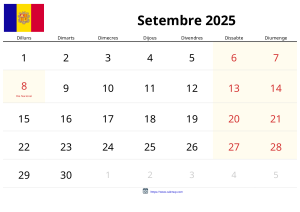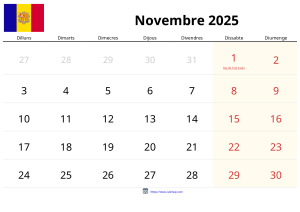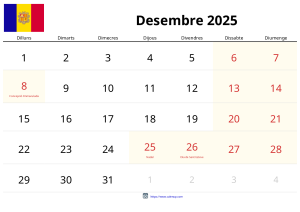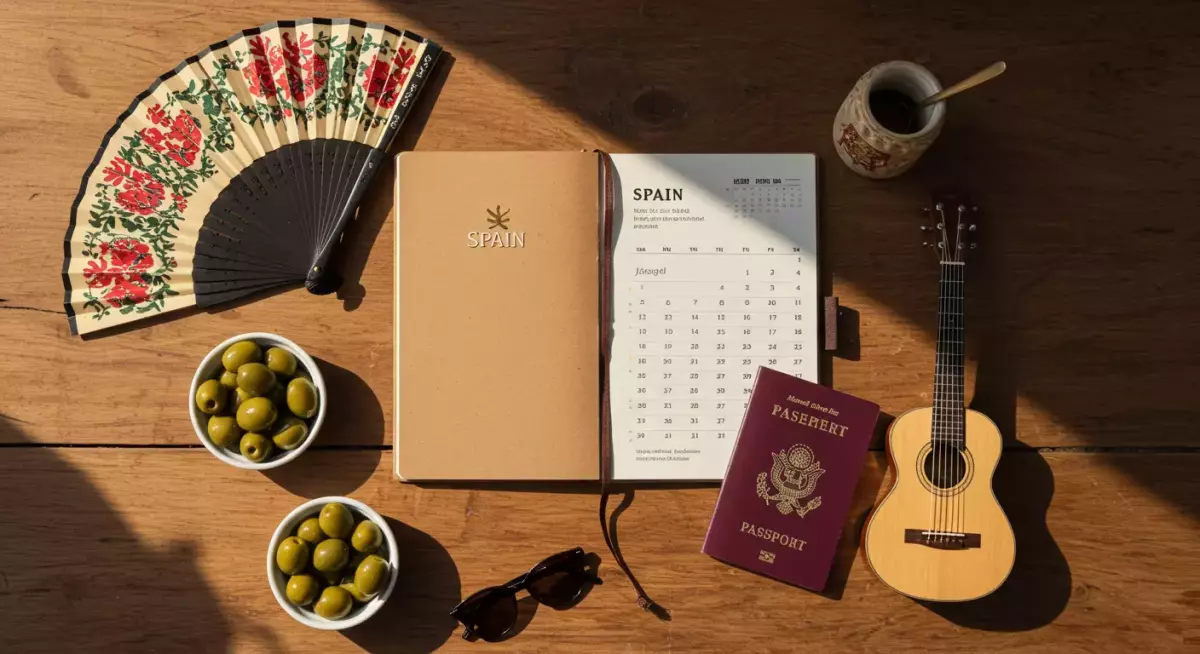Imagine yourself watching a flamenco show in Seville, exploring the works of Gaudí in Barcelona, or relaxing on a sunny beach in the Balearic Islands. Spain is a country that lives passionately, and planning your trip around its holiday calendar is the secret to experiencing its vibrant culture in its most authentic form.
More than just a list of dates, this is your strategic guide to using the Spanish calendar to your advantage. Whether it's to attend the most famous "fiestas," take advantage of the best times to visit Andalusia, or to understand the local pace of life, we will show you the key dates to turn your dream trip into reality.
The Great Spanish Seasons: When to Travel?
The Spanish calendar is marked by seasons and events that completely transform the traveler's experience. Choosing the right date is essential.
Spring and the "Fiestas" (March to June)
Perhaps the best time to visit central and southern Spain. The weather is perfect, the cities are in celebration, and the energy is contagious.
- Semana Santa (Movable date): One of the most intense and visual celebrations in the world, especially in cities like Seville and Málaga. The solemn processions are an unforgettable cultural experience.
- April Fair in Seville: Right after Easter, Seville bursts with color and joy during its famous "feria," a week of celebration filled with dance, food, and tradition.
- Labor Day (May 1): A national holiday that, depending on the year, may create a "bridge" for a longer trip.

The Mediterranean Summer (July and August)
The peak of heat and life on the beaches. It’s the time to explore the coastline, the islands, and participate in summer festivals.
- Assumption of Mary (August 15): A national holiday in the height of summer, perfect for those exploring the beaches of Ibiza or Mallorca.
Regional Holidays: The Diversity of Autonomous Communities
Spain is a country of nations, meaning each Autonomous Community has its own identity, culture, and, of course, its own holidays. Knowing them is essential for good planning.
- Catalonia: Celebrates Saint Jordi's Day (April 23), a beautiful tradition where books and roses are exchanged, and the Diada (September 11), the national day of Catalonia.
- Basque Country: Celebrates Day of the Basque Country ("Aberri Eguna") on Easter Sunday.
- Galicia: The Day of Saint James (July 25) is the big day for Galicia and the final destination for thousands of pilgrims who walk the Camino de Santiago.
The Sacred Calendar: The Great Religious Celebrations of Spain
The Catholic heritage has profoundly shaped Spanish culture, and its religious celebrations are grand events that attract visitors from around the world.
- Semana Santa: As mentioned, it is the most important religious event. The processions, organized by secular "cofradías" (brotherhoods), are a public demonstration of faith and art.
- All Saints' Day (November 1): A day of strong family tradition, when Spaniards visit cemeteries to honor their ancestors with flowers.
- Three Kings' Day (January 6): For Spanish children, this is the most important day. On the night of January 5, cities are filled with the "Cabalgata de Reyes Magos," a magical parade where the Three Wise Men distribute sweets.
The Travel Dream: A Road Trip through Andalusia
For many, a trip to Spain is only complete with one experience: immersing in the soul of flamenco, exploring the Moorish palaces, and driving the sunny roads of Andalusia. A road trip through this region is an immersion in the most iconic and passionate Spain.
Itinerary: Seville, Córdoba, and Granada
The best way to explore the region is by renting a car, perhaps a SEAT, and traveling between cities. Start in Seville to watch an authentic flamenco show. From there, drive to Córdoba to visit its impressive Mosque-Cathedral. End in Granada, to marvel at the Alhambra Palace.
Master Tip: For a unique experience, stay at one of the Paradores de Turismo, a network of luxury hotels in castles, convents, and historic palaces. The Parador de Granada is located within the Alhambra complex itself.
Beware of the "Catch": Tickets for the Alhambra in Granada sell out months in advance. It is absolutely essential to buy your ticket online on the official website as soon as you set your travel dates. Don’t leave it until the last minute, or you won’t be able to enter.
Spain's National Holiday Calendar 2025
These are the official holidays ("fiestas nacionales") observed throughout the country. There are 8 holidays that cannot be replaced by the Autonomous Communities.
| Date in 2025 | National Holiday |
|---|---|
| January 1 | Año Nuevo |
| January 6 | Epifanía del Señor / Día de Reyes |
| Movable date | Viernes Santo |
| May 1 | Fiesta del Trabajo |
| August 15 | Asunción de la Virgen |
| October 12 | Fiesta Nacional de España |
| November 1 | Día de Todos los Santos |
| December 6 | Día de la Constitución Española |
| December 8 | Inmaculada Concepción |
| December 25 | Navidad |
Want the Full Year View?
Access our interactive annual calendar to see all holidays, plan your vacations, and organize your year with the full view.
Access the Annual Calendar of 2025The Secret of the "Puentes"
Here’s a tip that most guides don’t tell you: the concept of "hacer puente". When a holiday falls on a Tuesday or Thursday, it is extremely common for Spaniards to take off the Monday or Friday to create a super long 4-day weekend.
The "Puente de la Constitución," at the beginning of December (with the holidays on the 6th and 8th), is the most famous. For tourists, knowing the "puentes" of 2025 is the secret to two things:
1) Avoid traveling on those days, as trains from Renfe and flights from Iberia will be crowded and more expensive.
2) Take the opportunity to do the same and extend your trip!
Essential Tips for Traveling in Spain
- The "Siesta" Hour: In smaller cities and in the south, "siesta" is still a tradition. Don’t be surprised if you find many shops closed between 2 PM and 5 PM. Plan your shopping for the morning or early evening.
- The Department Store Experience: For a complete view of Spanish retail, visit El Corte Inglés. It is the largest and most famous department store in the country, selling everything from fashion brands like Zara to gourmet products.
- Dinner is Late: Spaniards dine late. Most restaurants only start filling up around 9 PM or 10 PM. If you arrive for dinner at 7 PM, you will probably find the restaurant empty.
Conclusion: Spain, a Destination for All Passions
The Spanish Holiday Calendar is your map to unlock the best experiences that the country has to offer. Using these dates as a guide for your trip ensures that you enjoy not only the historical monuments but also the vibrant culture, unforgettable gastronomy, and the passion that makes Spain such a unique destination.




